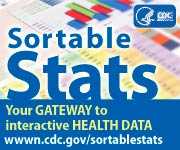Epidemiology and Surveillance
CDC's National Center for Chronic Disease Prevention and Health Promotion collects and analyzes data to understand the extent of health risk behaviors, preventive care practices, and the burden of chronic diseases to assess progress of public health programs and provide public health professionals and policy makers with timely information for effective decision making. Listed below are links to several state-based chronic disease surveillance systems supported by CDC. The center provides data and statistics relevant to each of its program areas here .
Behavioral Risk Factor and Surveillance System (BRFSS)
BRFSS is the nation's premier system of health-related telephone surveys that collect state data about US residents regarding their health-related risk behaviors, chronic health conditions, and use of preventive services. With the assistance of CDC, all 50 states, the District of Columbia, and 3 US territories collect BFRSS data from adults. BRFSS conducts more than 400,000 complete interviews each year, making it the largest continuously conducted health survey system in the world.

Chronic Disease Indicators (CDI)
The chronic disease indicators (CDI) are a set of surveillance indicators developed by consensus among CDC, the Council of State and Territorial Epidemiologists (CSTE), and the National Association of Chronic Disease Directors (NACDD). CDI enables public health professionals and policy makers to retrieve uniformly defined state and selected metropolitan-level data for chronic diseases and risk factors that have a substantial effect on public health. These indicators are essential for surveillance, prioritization, and evaluation of public health interventions.
Sortable Stats
 Sortable Stats is an interactive data set composed of behavioral risk factors and health indicators. This data set compiles state-level data for the 50 states, the District of Columbia, and US territories from various published CDC and federal sources into a format that allows users to view, sort, and analyze data at state, regional, and national levels. This tool is intended to serve as a resource in the promotion of policy, system, and environmental changes.
Sortable Stats is an interactive data set composed of behavioral risk factors and health indicators. This data set compiles state-level data for the 50 states, the District of Columbia, and US territories from various published CDC and federal sources into a format that allows users to view, sort, and analyze data at state, regional, and national levels. This tool is intended to serve as a resource in the promotion of policy, system, and environmental changes.
- Page last reviewed: April 20, 2016
- Page last updated: August 10, 2016
- Content source:


 ShareCompartir
ShareCompartir